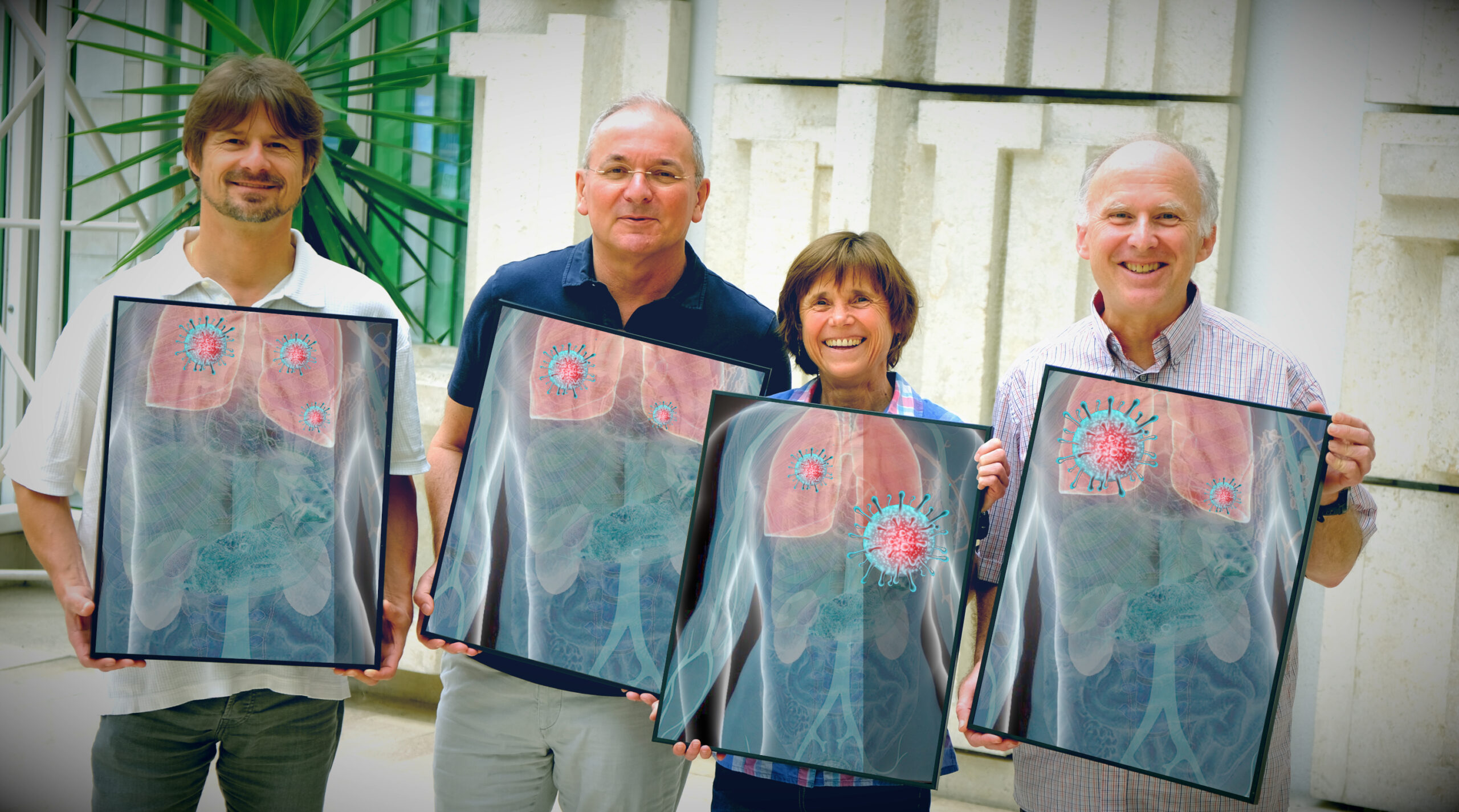COVID-19: THE EFFECT OF AEROSOLS
The exact role of the different COVID-19 modes of transmission remains unclear. Pandemic control measures have targeted specific modes of transmission, such as prescribing good hand hygiene to prevent contact infection, social distancing and face masks to prevent the transmission of droplets, and FFP2 masks to reduce aerosol transmission, a measure that is particularly important indoors.
At the PLUS, researchers have now successfully identified aerosol transmission as an independent risk factor for severe course of disease.
Modes of transmission linked to disease severity
People can be exposed to many different forms of inoculation. This is the name given to the process by which a disease-causing dose is passed on to a healthy person. This refers to both the number of viruses and the various anatomical structures where the virus first comes into contact with the infected person and then begins to replicate.
At the beginning of the pandemic, when PCR tests were not yet available, radiologists could distinguish COVID-19 cases from patients with other viral or bacterial pneumonia based on specific tissue changes in the deep lung. Patients who test positive for SARS-CoV-2 and develop severe symptoms often showed these changes in the early stages of infection.
Sabine Hofer and Norbert Hofstätter are studying the effect of aerosols in the respiratory tract and whether a COVID-19 infection can also start directly in the lungs. They are both working in Professor Albert Duschl’s research group, which is investigating immune responses to inhalable nanomaterials, among other topics, and are being supported by Professor Martin Himly from the Department of Biosciences. SARS-CoV-2 contaminated aerosols are nanoscale particles. During the COVID-19 crisis, the researchers took the opportunity to apply knowledge gained from nano-research at the Allergy Cancer BioNano Research Centre (ACBN) to the analysis of virus inhalation.
The general understanding is that lung infections start in the mouth and nose and then spread to the lungs in the respiratory tract. The team used approaches established for the study of nanomaterials to see whether this is always the case.
Computer simulation: no better way to investigate COVID-19 transmission modelling
Computer simulation is the only viable alternative to using human studies or animal and cell culture experiments. Human studies would mean infecting healthy people, which is not ethically justifiable, for the most part. Experiments on animals can only provide a limited insight, as lung anatomy differs considerably from species to species. Finally, cell culture experiments cannot provide any answers as to how aerosols find their way into the lungs. So, the best approach is to use computer simulation models, which have played a big part in this study.
COVID-19 initiation directly in the deep lung
The study results showed that SARS-CoV-2 contaminated aerosols are primarily deposited in the deep lung, which are sensitive areas where oxygen is absorbed. Evidence shows that inhalation of contaminated aerosols can lead directly to infection in the deep lung with no prior infection higher up in the respiratory tract. This is particularly interesting, as it is the infection of this area that is associated with the severe symptoms of the disease.
What can we take away from this?
Breathing in aerosols is an easy way to catch the virus. This is why protective measures such as FFP2 masks are recommended, especially when new mutations emerge that can be transmitted even more easily.
___________________________________________________________
Further information
- LINK to publication: doi.org/10.3390/jpm11050431
- PLUS Focus Area Allergy Cancer BioNano Research Centre (ACBN): acbn.sbg.ac.at
- Martin Himly: plus.ac.at/himly






